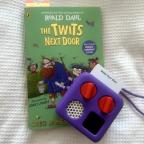
Due Date Calculator: Finding the Perfect Breast Pump for Your Journey
Planning your breastfeeding journey takes a lot of thought and choosing the right breast pump is an important decision which can definitely affect your success. With so many choices on the market from small portable units to hospital-grade instruments to creative wearable tech, it can be daunting to choose the right device for you. These each have benefits, from optimum siphoning, to portable under, to low-key removal. Hospital-grade pumps offer powerful performance for regular use; portable pumps provide versatility for on-the-go lifestyles; and wearable models blaze new trails for multitasking ability. In this ultimate guide, we will walk you through the key things to look for when choosing a due date calculator provider, so you can navigate the process with confidence! With so many options on the market, knowing your needs and the features can go a long way in helping you find a breast pump that both supports your breastfeeding journey and integrates with your everyday life.
Understanding Different Types of Breast Pumps
When looking into breast pump options, you will find three main categories designed for different needs and lifestyles. Hospital-grade pumps are considered the gold standard of pumping, equipped with powerful motors and suction technology that closely mimics a baby’s natural nursing pattern. These powerhouses are great for building and sustaining milk supply so mothers who pump exclusively or who have had issues with their lactation journey would benefit their use. Portable electric pumps provide a good compromise between performance and convenience while still providing a solid amount of suction strength in a small package. These multifunctional devices usually add dual pumping and adjustable settings, which is ideal for working moms or frequent pumping sessions. Breast pumping technology has made serious strides and the latest are wearable pumps that fit into your bra. These hands-free devices make multitasking a breeze, albeit they might not provide the same level of suction as standard varieties. Each type has its own strengths and weaknesses, though all offer varying degrees of suction power, noise level, portability, and ease of cleaning, and many newer models even include smart technology that tracks pumping time and production in conjunction with a phone app.
Benefits of Portable Breast Pumps
Convenience and Mobility
Portable breast pumps are revolutionizing the flexibility of breast pumps for modern mothers. These compact devices are small enough to toss in a purse or diaper bag, making them perfect for pumping at work, on the go, or popping into the store. With plug-in and battery operation ports on most models, you’re never left looking for an outlet. Most have built-in rechargeable batteries that offer 2-3 hours of continuous pumping, which is enough for a full day out of the house. Most units include insulated storage compartments and milk collection bags, making it easier to keep your expressed milk fresh until you get back home. But don’t worry — the compact design doesn’t mean it skimps on function, as most portable pumps have adjustable suction strength and pumping rhythms to fit your own comfort level and milk flow patterns.
Comfort Features
Thoughtful designs have focused on mother comfort in modern portable pumps. Top brands including momcozy take the lead, offering soft-touch silicone flanges in various sizes for a good fit, as well as cushioned inserts for added comfort during long pumping sessions. Digital memory settings track your favorite pumping patterns, so you don’t have to reset each time. Some of the best models use two-phase expression technology, which simulates your baby’s natural nursing rhythm via quick, shallow suction at first followed by deeper, slower pulls. Noise reduction technology makes for quiet and discreet operation — most units operate at under 45 decibels, about as quiet as a whispered conversation. Backlit displays and night mode features help you see what you're doing while your partner sleeps, and ergonomic handles and lightweight construction help prevent hand fatigue when manually expressing milk.
Choosing the Right Breast Pump
Assessment Factors
If you’re purchasing your first breast pump, think about how often you’ll need to express milk. Full-time working moms usually get more mileage out of double electric pumps, but occasional pumpers may want to get a single electric or a manual one. Assess your daily routine — will you be pumping at work multiple times or primarily at home? Feeding your baby matters, too, particularly if you’re exclusively pumping or supplementing. Consider living space and storage needs, especially in small homes or shared workspaces. Your insurance coverage can greatly affect your decision, as many providers cover certain pump models under the Affordable Care Act. Before making a final decision, document your provider’s policies and options covered.
Decision Guide
For pumping in the workplace, choose a double electric breast pump that makes automation and privacy a priority. If you plan to pump mostly at home, you may want a hospital-grade rental to establish and build your supply, then switch to a personal pump. 2: The Checklist: Must-have features include: battery operation for mobility, adjustable suction levels for comfort and ease of cleaning for maintenance. For frequent pumpers: Get one primary pump plus a manual back-up option. Hospital-grade pumps are ideal for situations where you need to establish a milk supply, addressing feeding difficulties, or feeding multiples. Portable electric pumps that can be assembled and expressed efficiently often work best for mothers who are also working. Stay-at-home parents might consider wearable options, so they can multitask while doing chores around the home.]
Making the Best Choice for Your Breastfeeding Journey
Choosing the right breast pump is an incredibly important part of your breastfeeding journey that you should think long and hard about. Ultimately, your individual lifestyle, pumping routine, and comfort needs should guide your choice.] Whether you opt for a hospital-grade pump to establish supply, a portable electric pump for workplace freedom, or a wearable option for multitasking flexibility, make sure it fits your day-to-day hustle and your breast-feeding goals. Start with options covered by your insurance provider, then consider additional features that may improve your pumping experience. Feel free to also ask lactation consultants and experienced mothers for specific recommendations as well. By taking the time to evaluate your needs and the options available to you, you’ll be prepared to choose a breast pump that sets you up for breastfeeding success and allows you to continue providing an abundance of milk for your baby.














